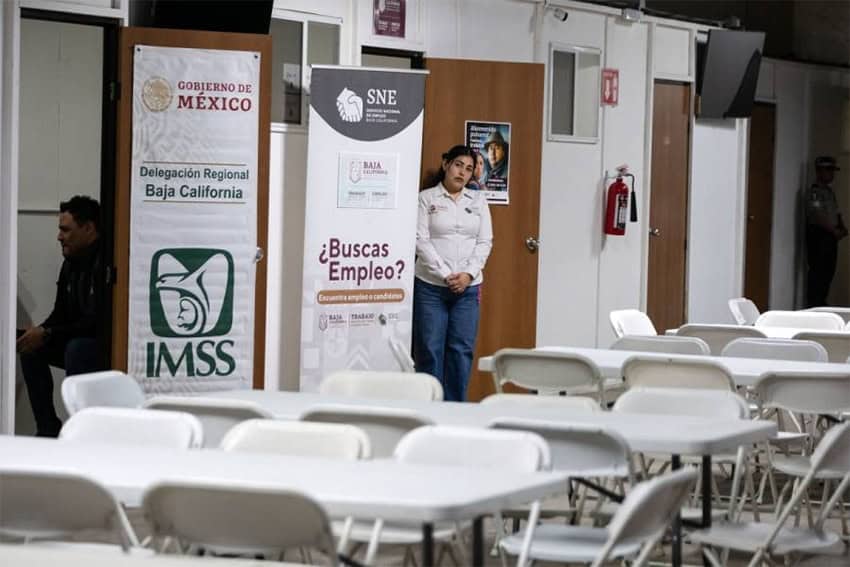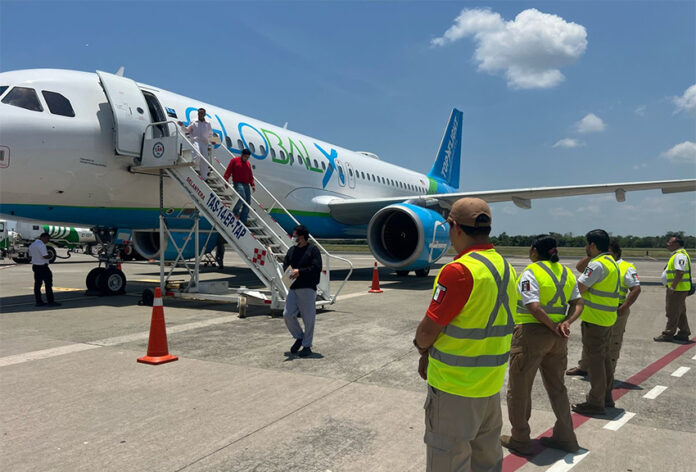A government program designed to provide support for deported Mexicans from the United States is proving to be woefully deficient, mainly because the U.S. is flying them far away from where the support resources are located.
In January, President Claudia Sheinbaum’s government formally launched the “Mexico Embraces You” deportee reception program with much fanfare. Sheinbaum enlisted the support of a leading business association and more than 380 companies that had agreed to provide 60,000 permanent jobs to repatriated Mexicans.
Mexico pledged jobs to ease lives of its citizens deported from the US since Trump returned to power, but a mismatched deportation process is creating challenges for those sent far from the border, @amystillman @mayaaverbuch report https://t.co/Fu7ebefm0D pic.twitter.com/aRZEV0RnST
— Stephen Wicary (@wicary) June 11, 2025
With Donald Trump’s election as U.S. president in November 2024, the Sheinbaum administration anticipated a spike in return-migration as Trump had repeatedly pledged to carry out mass deportations during his campaign.
Upon presenting the new program in January, the Mexican government touted months of preparation that would provide returnees “with an appropriate reception and give them certainty of opportunities for a dignified life in their native country.”
However, an update provided last month by the Interior Ministry revealed that the program had provided jobs for only about 4% of the nearly 40,000 Mexicans who had been deported since Trump returned to the White House.
A geographic mismatch
The major stumbling block for the “Mexico Embraces You” program has been the U.S. government’s decision to send deportation flights to airports near Mexico’s southern border with Guatemala.
That decision, according to Bloomberg News, was to discourage the returnees from attempting the arduous journey north again. But the practical effect is that it strands them miles distant from the job opportunities and reintegration services so carefully prepared by the Sheinbaum administration.
Mexican officials had expected deportees to arrive by plane in Mexico City — where services to receive them had been established — or to be sent across the northern border by land, where a significant amount of resources had been sent.
Mexico’s Business Coordinating Council (CCE) had agreed to hold job fairs to assist expelled Mexicans at Mexico City’s AIFA airport. But so far, no such fairs have been held since regular flights have not arrived.
Instead, more than 90 deportation flights have been sent to Chiapas or Tabasco in southern Mexico and not a single deportation plane has landed in Mexico City since Feb. 17.

The CCE further says that the lack of space at smaller airports in southern Mexico makes it impossible to host job fairs there.
Mexico’s National Migration Institute has been enlisted to transport repatriated countrymen who find themselves in southern Mexico to bus terminals, but the one-time cash benefit supplied by the government is often not enough to purchase a ticket home.
The result is that many deportees have found themselves stuck in states where jobs are scarce. Chiapas and Tabasco are among Mexico’s poorest states.
Bloomberg reported that around 40% of the more than 70,000 “Mexico Embraces You” job openings reported in mid-May were located in the northern industrial state of Nuevo León, in the west-central state of Jalisco and in Mexico City and surrounding México state. By contrast, Chiapas and Tabasco are among the states with the fewest openings, less than 1,000 each.
Another issue hampering the programs, according to Bloomberg, is the lack of advance notice regarding deportation flights given by the U.S. government to Mexico.
With reports from Bloomberg News and El Financiero
